The Improvement Era (often shortened to The Era) was an official magazine of the Church of Jesus Christ of Latter-day Saints (LDS Church) between 1897 and 1970. [1]
The Improvement Era (often shortened to The Era) was an official magazine of the Church of Jesus Christ of Latter-day Saints (LDS Church) between 1897 and 1970. [1]
The Improvement Era was first published in 1897 as a replacement to the unofficial magazine, The Contributor . Over the years, it was the official publishing organ for a variety of organizations within the Church of Jesus Christ of Latter-day Saints, including the Seventies, the Young Men's Mutual Improvement Association, the Young Ladies' Mutual Improvement Association, priesthood quorums, church schools, the Church Music Committee, and the Home Teaching Committee. In the July 1960 issue, an insert targeted toward the teenagers of the church was included. Entitled "The Era of Youth," it continued to be included in the Improvement Era until 1970, when it became the basis for the New Era .
With the implementation of the Priesthood Correlation Program in 1970, the Improvement Era ceased publication and was replaced by the New Era and the Ensign .
Editors of the Improvement Era included Joseph F. Smith, Heber J. Grant, George Albert Smith, David O. McKay, Joseph Fielding Smith, John A. Widtsoe, Richard L. Evans, B. H. Roberts, Edward H. Anderson, Hugh J. Cannon, Harrison R. Merrill, and Doyle L. Green.
The February 1968 issue included the first publication of images of the Joseph Smith Papyri, in sepia tone.
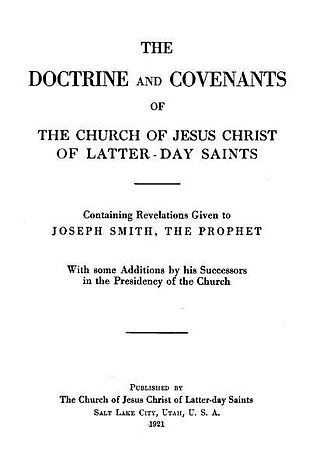
The Doctrine and Covenants is a part of the open scriptural canon of several denominations of the Latter Day Saint movement. Originally published in 1835 as Doctrine and Covenants of the Church of the Latter Day Saints: Carefully Selected from the Revelations of God, editions of the book continue to be printed mainly by the Church of Jesus Christ of Latter-day Saints and the Community of Christ.
The Adam–God doctrine was a theological idea taught in mid-19th century Mormonism by Brigham Young, a president of the Church of Jesus Christ of Latter-day Saints. Although the doctrine is rejected by the LDS Church today, it is still an accepted part of the modern theology of some Mormon fundamentalists.
In Mormonism, the restoration refers to a return of the authentic priesthood power, spiritual gifts, ordinances, living prophets and revelation of the primitive Church of Christ after a long period of apostasy. While in some contexts the term may also refer to the early history of Mormonism, in other contexts the term is used in a way to include the time that has elapsed from the church's earliest beginnings until the present day. Especially in the Church of Jesus Christ of Latter-day Saints "the restoration" is often used also as a term to encompass the corpus of religious messages from its general leaders down to the present.
In the Church of Jesus Christ of Latter-day Saints, the Priesthood Correlation Program began in 1908 as a program to reform the instruction manuals and curriculum of the different organizations of the church. Its scope quickly widened and Correlation came to have large effects on almost every aspect of the church including doctrines, organizations, finances, and ordinances. A significant consequence was to centralize decision making power in the priesthood, particularly the Quorum of the 12 Apostles. More recently, the function of the correlation department has shifted to planning and approving church publications and curriculum and keeping unorthodox information, doctrines and other undesired concepts from being introduced or revived.

Joseph Fielding Smith Sr. was an American religious leader who served as the sixth president of the Church of Jesus Christ of Latter-day Saints. He was a nephew to, and the last president of the LDS Church to have known personally, Joseph Smith, the founder of the Latter Day Saint movement.

David Oman McKay was an American religious leader and educator who served as the ninth president of the Church of Jesus Christ of Latter-day Saints from 1951 until his death in 1970. Ordained an apostle and member of the Quorum of the Twelve Apostles in 1906, McKay was an active general authority for nearly 64 years, longer than anyone else in LDS Church history.
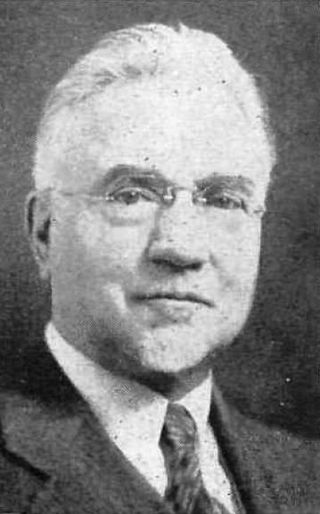
John Andreas Widtsoe was a Norwegian-American scientist, author, and religious leader who was a member of the Quorum of the Twelve Apostles of the Church of Jesus Christ of Latter-day Saints from 1921 until his death in 1952.

The Elders' Journal of the Church of Latter Day Saints was an early Latter Day Saint periodical edited by Don Carlos Smith, younger brother of Joseph Smith. It was the successor to the Latter Day Saints' Messenger and Advocate and was eventually replaced by the Times and Seasons.
This is a timeline of major events in Mormonism in the 20th century.
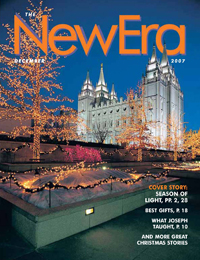
The New Era was an official magazine of the Church of Jesus Christ of Latter-day Saints from 1971 to 2020. First published in January 1971 along with the Ensign and the Friend, the New Era's intended audience was the church's youth. The magazine replaced the similarly themed The Improvement Era, a periodical published from 1897 to 1970.

The Friend, formerly titled The Children's Friend, is a monthly children's magazine published by the Church of Jesus Christ of Latter-day Saints. It is aimed at those of Primary age, approximately ages 3 through 12. It includes messages from church leaders, stories, crafts, recipes, and artwork and poetry submitted by readers.
The Young Women is a youth organization of the Church of Jesus Christ of Latter-day Saints. The purpose of the Young Women organization is to help each young woman "be worthy to make and keep sacred covenants and receive the ordinances of the temple."
The Young Men is a youth organization and official program of the Church of Jesus Christ of Latter-day Saints. Its purpose is to assist the church's Aaronic priesthood-aged young men in their growth and development. The organization serves young men from the year they turn 12 until they are 18.

The Young Woman's Journal was an official publication of the Church of Jesus Christ of Latter-day Saints for the Young Ladies' Mutual Improvement Association (YLMIA), then the LDS Church's organization for adolescent females.
Junius Free Wells was the first head of the Young Men's Mutual Improvement Association, an organization which is today the Young Men organization of the Church of Jesus Christ of Latter-day Saints. He also was a magazine founder, an author, and the chief organizer of the LDS Church's efforts to build a number of historical monuments in the early 1900s.
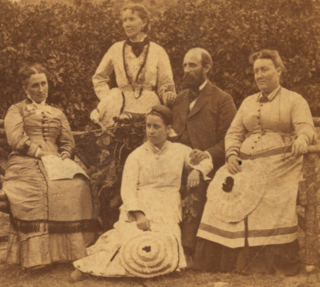
The "Second Manifesto" was a 1904 declaration made by Joseph F. Smith, the president of the Church of Jesus Christ of Latter-day Saints, in which Smith stated the church was no longer sanctioning marriages that violated the laws of the land and set down the principle that those entering into or solemnizing polygamous marriages would be excommunicated from the church.
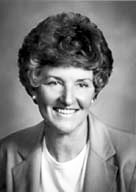
Elaine Anderson Cannon was the eighth general president of the Young Women organization of the Church of Jesus Christ of Latter-day Saints from 1978 to 1984. Cannon was a writer and an editor and the author of over fifty books.
The Contributor was an independent publication associated with the Church of Jesus Christ of Latter-day Saints between 1879 and 1896. It was a monthly periodical and sought to represent the Young Men's and Young Ladies' Mutual Improvement Associations, the youth organizations of the LDS Church at the time. It was founded by Junius F. Wells, the inaugural head of the YMMIA.